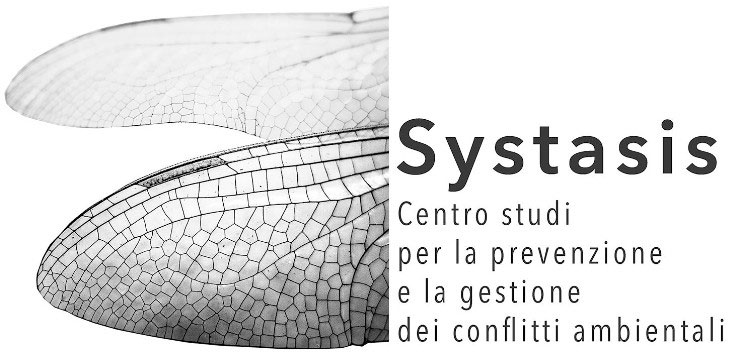MODELS AND STRATEGIES TO PREVENT AND MANAGE ENVIRONMENTAL CONFLICTS
PROJECT MEDIATION – MODELS AND STRATEGIES TO PREVENT AND MANAGE ENVIRONMENTAL CONFLICTS
The project, started by The Study Center Systasis at the beginning of 2019 and ended in 2020, was the operational development and conclusion of the different project “Mediation for environmental conflicts”, cofounded in 2015/2016 by Fondazione Cariplo (with the involvement of the Camera Arbitrale of Milan – www.mediazionemabiente.it ).
This project saw wide and multidisciplinary partnerships with whom the first research and the first case study on the use of mediation tool for environmental conflict management and prevention was launched.
The Camera Arbitrale of Milan now has its own environmental mediation office.
The content and the goal of the project were:
- to conduct a study on the use of mediation for environmental related situations;
- to deal with the technical and cultural difficulties of the Public Administrations, related to the use of the mediation tool for environmental conflicts, emerged in the study fase;
- to share the results and to show the positive outcomes of the experiment held in Milan which could be a successful lead example for similar cases everywhere in Italy.
The people: The project, conceived and led by Lawyer Veronica Dini (who has already worked on similar initiatives), involved longtime Partners, with their well-established and trusted experience, and other new Partners who brought to the table specific expertise and essential connections.
The first project, ended in December 2016, made clear that the use of the mediation tool and all the alternative methods of conflict resolution for environmental conflicts could be successful. Nevertheless, this breakthrough to be fully implemented and embraced by the majority needed more work and attention.
During the first year, the multidisciplinary and multi-party research allowed the construction of practical models then applied by the Milan Camera Arbitrale on real-life cases. Overall the cases selected to test the models were 18 (some of them closed after the end of the project). When a deal between the parties couldn’t be reached, the experiment showed that a constructive dialogue between them could still be possible instead of trial.
The people and Partners involved in the experiment concluded that the use of the mediation tool could be an effective resource in the resolution of some environmental conflicts, even complex ones. In fact, from the experiment emerged that the dialogue between the parties on the respective problems and interests simplifies the route toward a shared solution, also with less costs and shorter times.
Some of the agreement reached also involved the Public Administrations who then asked the researchers to extend the experimental use of the mediation tools to different environmental procedures in order to prevent disputes that are nowadays frequent and involve them, sometimes one against each other.
The results of the experimentation, shared with the Partners, brought to light also some difficulties that needed to be dealt with in the next fase of the project to make the mediation tool for environmental conflicts work. For this reason the Study Center Systasis on environmental conflicts prevention and management, led by Lawyer Veronica Dini with its team of expert and researchers (than already were involved in the first fase), continued the work started in three ways:
- Extending the use of the mediation tool also for environmental crimes building the first Center for environmental crime mediation, based on the principles of restorative justice.
- Spreading the use of mediation for environmental issues, especially for disputes within the administrative jurisdiction. Supporting municipalities and local public entities in adopting efficient polices that include the mediation tool. Starting with the TAR of Milan a new experimentation fase focused on simplify the activation of the mediation procedures for specific cases.
- Supporting also experts and advisors in the prevention and management of environmental conflicts by sharing the methods for evaluating environmental damages.
Moreover, this project was shared with other entities and all the Italian mediation offices who wanted to partecipate. The goal was in fact to promote and spread the positive result reached.
Foreseeing European projects in this field, Systasis deepened the dialogue with European Institutions – facilitated by the EU Parliament Office in Italy and the Office representing the EU Commission in Milan – on the alternative methods for the resolution of environmental conflicts.
At the operational level this goal was achieved with a multidisciplinary and multiparty approach. Beside the juridical knowledge, for the successful resolution of complex environmental conflicts is in fact needed sociological, technical and scientific expertise. For this reason different associations, with diversified backgrounds but focused on the issue, were involved.
